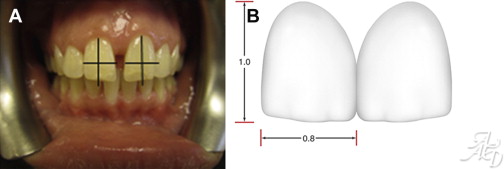This article demonstrates the use of a smile evaluation form as an adjunct in arriving at diagnosis and developing a treatment plan for a patient desiring Diastema closure. It also shows the importance of the diagnostic wax-up for temporization and visualization of case outcome. The case also demonstrates the use of soft tissue lasers to create a gingival harmony that enhanced the resulting esthetics. Feldspathic porcelain was used for the final restorations because they provide optimal esthetics and translucency.
Key points
- •
This article demonstrates the use of a smile evaluation form as an adjunct in arriving at a diagnosis and developing a treatment plan for a patient desiring Diastema closure.
- •
It also shows the importance of the diagnostic wax-up for temporization and visualization of case outcome.
- •
The case also demonstrates the use of soft tissue lasers to create a gingival harmony that enhanced the resulting esthetics.
- •
Feldspathic porcelain was used for the final restorations because they provide optimal esthetics and translucency.
The patient, a young woman in her early twenties, presented to the Honors Esthetics Clinic at New York University (NYU) College of Dentistry. Her chief complaint was the large diastema between teeth numbers 8 and 9 ( Fig. 1 ). Possible causes of the diastema were evaluated and found to be the impact of the low maxillary frenum and possibly an anterior tongue thrust. To completely evaluate the patient, an American Academy of Cosmetic Dentistry series of photographs were taken ( Fig. 2 ), a periodontal evaluation performed, and diagnostic casts made. An NYU College of Dentistry Smile Evaluation Form (SEF) ( Fig. 3 ) was completed. Problems identified in the SEF included the following:
- •
Poor width-to-length ratio of the central incisors ( Fig. 4 )

Fig. 4 ( A ) Discrepancy in the width-to-length ratio. ( B ) Ideal width-to-length ratio of central incisors.([ B ] Courtesy of American Academy of Cosmetic Dentistry, Madison, WI; with permission.) - •
Poor gingival zeniths position (very asymmetrical) ( Fig. 5 )

Fig. 5 ( A ) Poor gingival zeniths, asymmetrical. ( B ) Ideal gingival zeniths.
Stay updated, free dental videos. Join our Telegram channel

VIDEdental - Online dental courses


